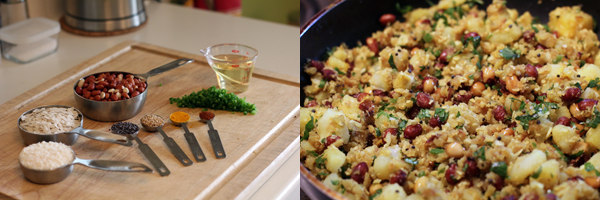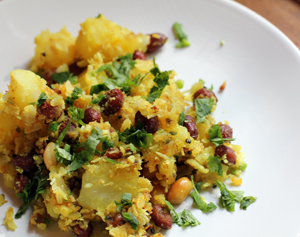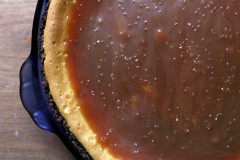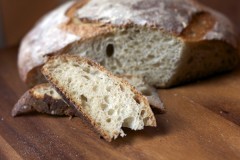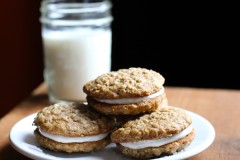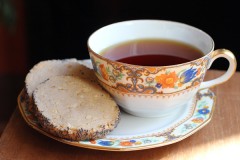For the first time in a long while, I woke up this morning with no one expecting any kind of work out of me whatsoever. As a change of pace, I found a new book to read, announced to the cat that I was taking a vacation, poured some coffee, and plopped down on the couch.
All that relaxing eventually made me hungry, however, so I headed to the grocery for some fun, over-processed treat to fuel this day of slothfulness (as part of my vacation, I was keeping off the internet and out of the kitchen). Cruising down the aisles failed to produce anything tempting–plus, I realized halfway through my shopping adventure that it would be hard to eat and enjoy something made of things I could not pronounce while simultaneously reading a book about farming. I re-strategized, grabbed a couple potatoes, a jalapeño pepper, and a bunch of cilantro, and headed home to fry up the awesomest of hot afternoon snacks: Potato and Peanut Pawa.
This is a dish I rediscovered in World Food Cafe: Global Vegetarian Cooking (a too-short collection of amazing vegetarian recipes from exotic locales), but I first ate it in Nepal almost a decade ago. The woman I was living with would drop everything to whip up a batch for any late-afternoon guests who wandered in needing something substantial to nosh on. As far as timing went, this usually occurred while she was also in the middle of making dinner, and the fact that she would just reshuffle and squeeze in another pan on the two-burner stove amazed me. It also irked me somewhat, since these hungry stomachs interrupting things never seemed to belong to her friends but rather a group of dudes who came to have leisurely chats with her husband. I liked the snack a great deal, however, so I kept my opinions to myself and tried to help out.
The most interesting ingredient in this dish to me is the pawa, also called beaten or flattened rice. It doesn’t taste like much of anything on its own, but once fried up with the potatoes and peanuts, it sucks up the salt and oil flavors and becomes quite a tasty aspect to the mix while keeping the potatoes from clumping together.
Step-by-step photos and my variation on the recipe can be found here.

